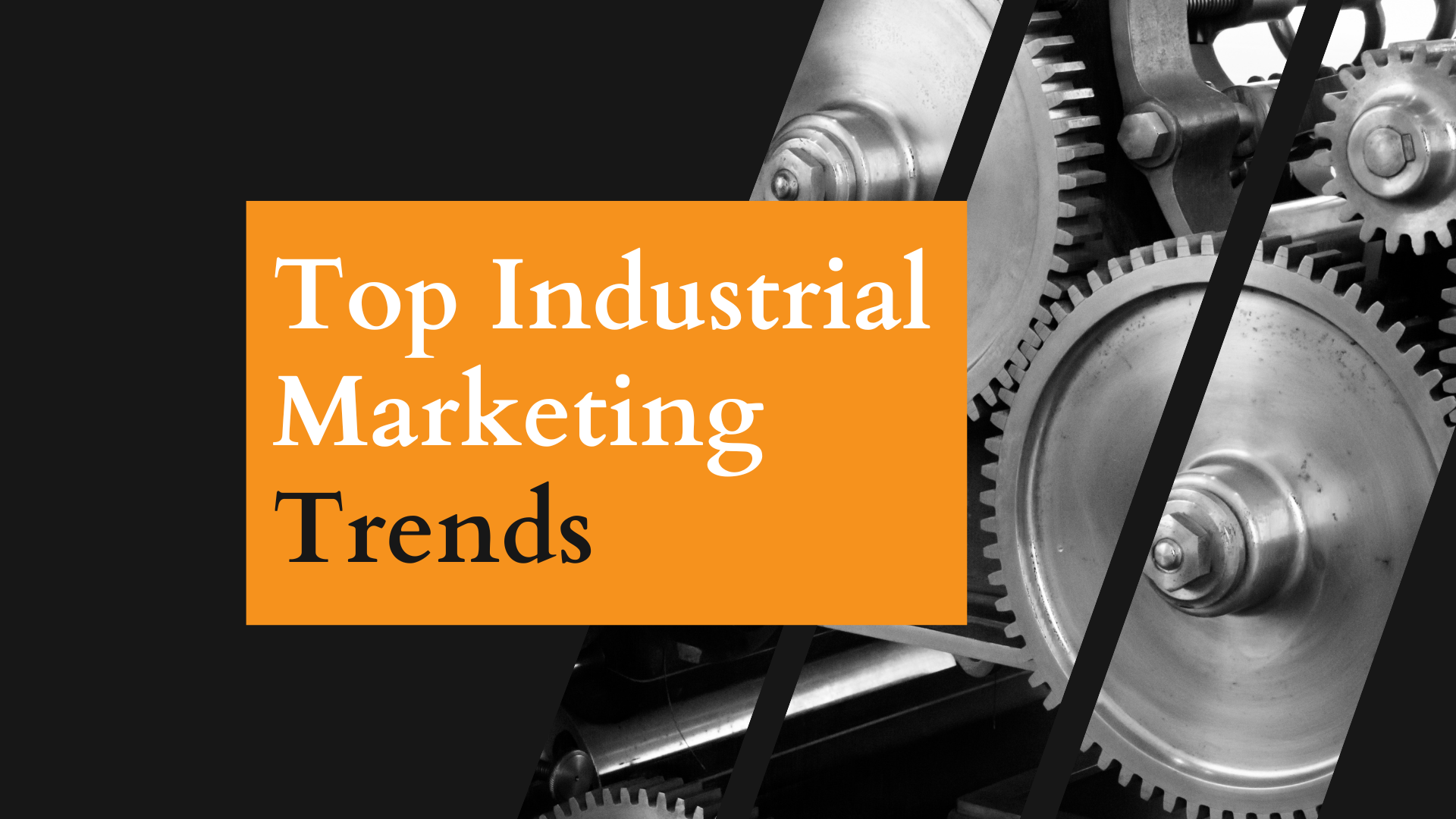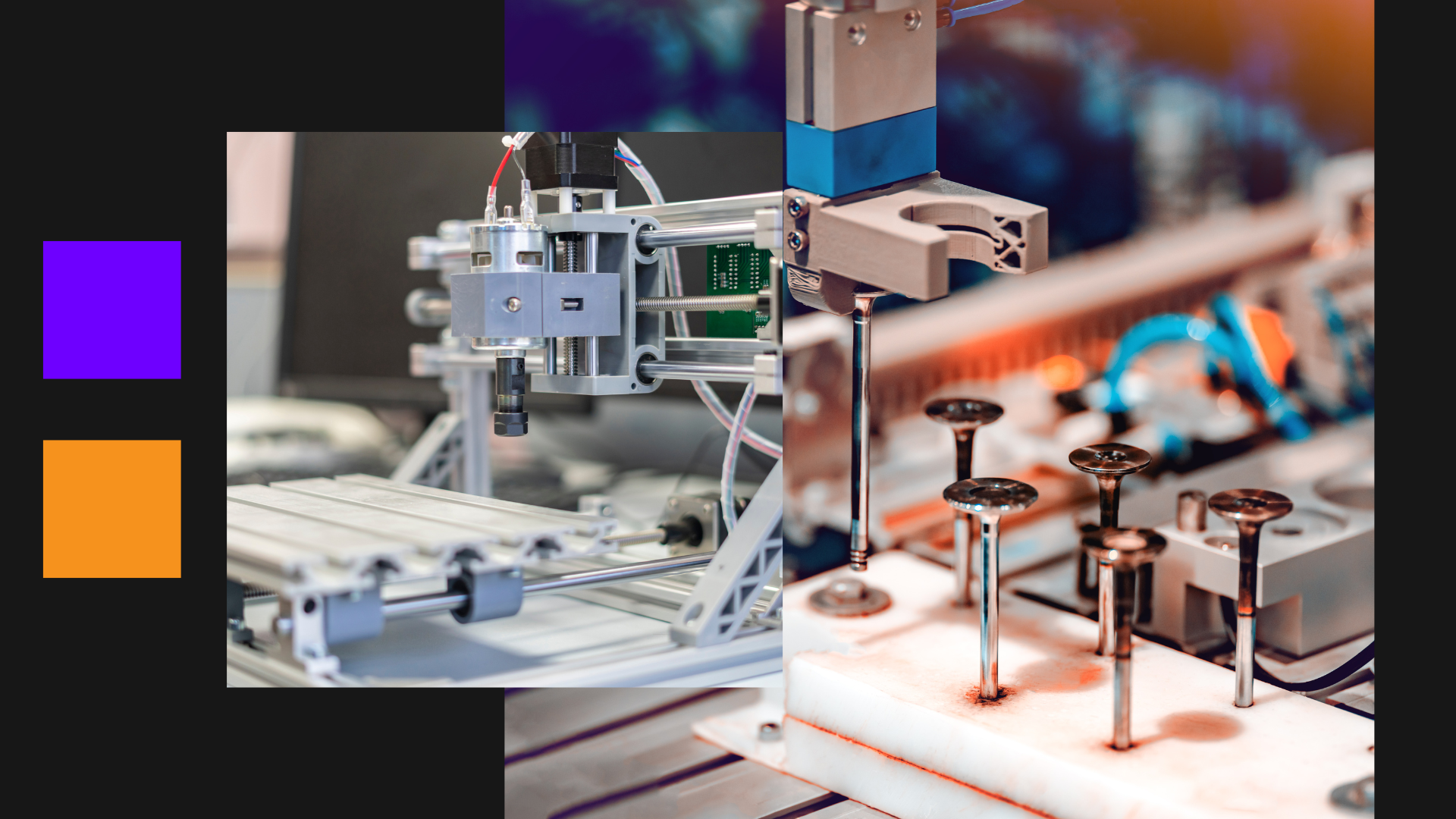Top Industrial Marketing Trends
In digital marketing, following the industrial marketing trends is not optional; it is rather necessary. In 2024, an impressive 85% of industrial businesses used digital marketing methods, up from prior years. This development emphasizes why companies must innovate and grow in this ever-changing landscape.
The purpose of this article is to provide industrial marketers with an understanding of the main trends influencing their field of work. Companies may stay ahead, solve unique marketing problems, and improve marketing results by knowing and using these trends.
Complex buying cycles, narrow markets, and high-value transactions define industrial marketing as a unique set of challenges. The trends in this article offer solutions and growth opportunities.
The Importance of Trend Awareness
For industrial businesses, following trends is crucial for several compelling reasons. First and foremost, knowing emerging manufacturing marketing trends helps organizations compete in a crowded market. Those who lag could find themselves at a disadvantage as more companies implement cutting-edge marketing techniques since they cannot connect or interact with their target market efficiently.
Implementing current trends in industrial marketing helps organizations meet changing customer expectations and preferences, which can boost customer happiness and loyalty. Being proactive in adjusting to new trends also creates chances for innovation and difference, therefore enabling businesses to grab fresh market prospects and maybe upset the status quo.
Finally, remaining current on industry trends allows organizations to use the newest technologies and data-driven strategies to optimize their marketing efforts, improving efficiency and ROI. As the industrial landscape becomes more complicated, timely adoption of new methods is no longer helpful but essential for business success.
Key Industrial Marketing Trends for 2024

AI and Machine Learning
Machine learning and artificial intelligence are changing industrial marketers’ campaign execution and strategic planning. These technologies use massive data sets to develop insights and forecasts for more tailored and effective marketing.
Since artificial intelligence and machine learning may greatly improve decision-making procedures, its acceptance in industrial marketing is the following. These manufacturing marketing trends enable more effective targeting and engagement techniques as data creation grows dramatically.
Benefits for Industrial Marketers:
-
Personalized Customer Experiences: AI and ML personalize information and interactions, improving customer satisfaction.
- Improved Lead Scoring: These tools prioritizing those most likely to convert can more precisely examine possible leads.
- Better Segmentation: Marketers can segment their audiences for more targeted communications.
- Higher Conversion Rates: More focused marketing campaigns help to enhance conversion rates, hence raising sales and income.
- Enhanced Efficiency: Marketing automation frees marketers to focus on strategic planning and decision-making.
-
Optimized Return on Investment: Targeting precisely and bettering campaign performance helps to allocate marketing resources more successfully.
Iindustrial Marketing Trends Implementation Tips:
-
Ensure Access to High-Quality Data: AI and ML are data-driven, therefore accurate implementation and insights require large and reliable data sets.
- Invest in Training and Resources: Using training courses and resource allocation, equip your staff with the required skills and knowledge thereby optimizing the possibilities of artificial intelligence and machine learning.
- Collaborate with Technology Vendors: Leading AI and ML suppliers can offer advice and assistance during deployment.
-
Start with Small Pilot Projects: Start with small initiatives to test AI and ML applications so your business may evaluate their effects and make any required changes before more general implementation.
Emphasis on Customer Experience
Industrial marketing trends prioritize customer experience throughout the buyer’s journey, assuring frictionless, personalized, and meeting consumer expectations. It goes beyond standard customer service by merging innovative technologies and personalized content to fulfill industrial buyers’ specific demands, making business interactions intuitive and pleasurable.
This tendency is growing as industrial purchasers seek the same degree of attention and personalization as consumers. Digital transformation has increased customer expectations for service and interaction quality due to access to huge amounts of information.
Benefits:
-
Increased Customer Loyalty: Industrial companies may build long-term connections and retain customers by focusing on customer experience.
- Competitive Advantage: A great customer experience helps firms stand out in a congested market and attract more customers.
- Higher Revenue Potential: Customer satisfaction increases sales because satisfied customers are more likely to return and refer the firm.
- Improved Brand Reputation: Positive client experiences strengthen a company’s reputation, improving market trust and credibility.
- Valuable Customer Insights: Through close consumer engagement, manufacturing companies learn client preferences, improving product development and marketing methods.
-
Streamlined Customer Journeys: A seamless buyer’s journey speeds up decisions and simplifies the sales process.

Tips for Implementing this Practice in Marketing Strategies:
- Leverage Customer Feedback: Regularly collect and analyze client feedback to identify requirements and opportunities for improvement, ensuring the experience meets expectations.
- Utilize Technology Smartly: Use AI and ML to personalize and streamline customer interactions and integrate data across touchpoints.
- Train Staff Extensively: Continuous empathy and customer-centric training and development programs align all team members with customer experience goals.
- Design a Customer-Centric Culture: Encourage and reward customer-satisfying conduct to create a customer-focused culture.
- Map Out Customer Journeys: Create detailed customer journey maps to identify key touchpoints and bottlenecks for strategic customer pathway improvements.
- Invest in a Robust CRM System: Track interactions, preferences, and issues with customer relationship management solutions for targeted follow-ups and support.
- Collaborate Across Departments: Promote coordination across marketing, sales, and customer support to maintain consistent messaging and integrated service.
Enhanced Use of Content Marketing
Industrial marketing employs content marketing to attract and maintain a specific audience by providing relevant, valuable, and consistent material. This strategy approach builds industry trust and authority by giving future and current customers the knowledge that answers their demands and pain points.
Content marketing is popular in the industry since it builds brand authority and differentiates in a competitive market. Companies with smart and useful information have an advantage as industrial purchasers to investigate before buying.
Benefits of Implementing these Trends in Industrial Marketing:
-
Higher Engagement with Audience: Relevant content engages your ideal audience, increasing manufacturing company engagement.
- Improved SEO and Online Presence: Consistent, high-quality content raises search engine rankings, helping people locate your business online.
- Raised Lead Generation: Engaging content helps leads go through the sales funnel by meeting their needs.
- Brand Authority and Trust: By providing useful content, your organization becomes a thought leader and builds customer trust.
- Cost-Effective Strategy: Content marketing is cheaper than traditional marketing and stays relevant, thus it has good ROI.
Marketing Strategy Implementation Tips:
- Strategize content scheduling to maintain regular updates and messaging consistency.
- Create content that resonates with your audience by understanding their preferences.
- Instead of producing a lot of low-value material, focus on creating useful content.
- Make blogs, videos, infographics, whitepapers, and podcasts to satisfy varied tastes.
- Use keywords, meta descriptions, and alt tags to improve search engine rankings and organic traffic.
- Sharing user stories and testimonials builds credibility and community engagement.
-
To optimize strategy, regularly evaluate content performance using analytics tools.
Voice Search Optimization Trends in Industrial Marketing

Voi]ce search optimization makes digital material and online presence searchable by voice. Businesses must make their content accessible and relevant on voice-activated devices like smartphones, smart speakers, and virtual assistants.
Voice search optimization is driven by the growth of voice-activated technology, which allows users to search and retrieve information hands-free. To be competitive, companies must adapt to consumer behavior changes as more homes embrace smart speakers and people use voice help more.
Benefits for Industrial and Manufacturing Business:
- Increased Reach and Engagement and Enhanced User Experience
- Improved Local Visibility: Many voice searches are local, helping businesses gain local customers.
- Higher Conversion Rates: Action-oriented voice search inquiries may increase conversion rates as users seek immediate solutions or services.
Implementation Tips:
- Optimize for Conversational Keywords: To capture voice search queries, use natural, conversational long-tail keywords and phrases.
- Ensure Mobile-Friendliness: Voice searches are frequent on mobile devices, so make your website mobile-friendly.
- Claim and Update Google My Business Listing: Keep your business information updated and optimized for local search.
- Leverage Structured Data Markup: Search engines interpret and deliver content in voice search results better with organized data.
- Prioritize Page Load Speed: Page speed improves user experience and is preferred by search engines, especially voice searchers.
- Develop FAQ Pages: Create FAQ pages that answer frequent voice search questions for your audience.
- Track Voice Search Performance: Measure voice search’s impact with analytics and alter your strategy.
Video Marketing for Industrial Companies
Video marketing uses video material to promote a product or service, engage an audience, and increase digital and social interaction. Live streaming, tutorials, explainer videos, testimonials, and ads make it a versatile marketing tool. Video’s visual and auditory impact may convey complex information, making it a strong narrative and brand communication tool.
Video marketing is growing rapidly due to the demand for entertaining and accessible information in the digital age. With smartphones and high-speed internet, consumers are watching more videos online than ever. This development has led corporations to use video to swiftly grab attention and communicate. Videos for industrial marketing trends may personalize the customer experience, demonstrate products, and tell emotional brand stories.
Benefits for Manufacturing Companies:
-
This content may reach a wide audience and increase engagement by conveying detailed information swiftly and entertainingly.
- Videos help consumers remember a company’s products and services by reinforcing brand identification.
- Interactive and engaging video content can boost conversion rates by enticing viewers to buy or sign up.
- Search engines value video content and can display videos in SERPs and video platforms.
- Creative storytelling and relatable content help firms develop stronger, more personal customer connections through videos.
- Video content can be expensive to produce, but the long-term advantages and returns on investment generally outweigh them, making it a cost-effective marketing tool.
-
Videos are shared more on social media platforms, increasing content reach and visibility across audiences.

Digital Marketing Trends Implementation Tips:
- Create clear, measurable targets for your video marketing plan to direct material creation and evaluate effectiveness.
- Customize video content to your audience’s choices, interests.
- To keep professionalism and audience involvement, guarantee excellent video production including sound, lighting, and editing.
- Use keywords in video titles, descriptions, and tags to improve search engine and video platform visibility.
-
Put strong, convincing calls to action in your videos to increase viewer interaction and conversions.
Trends in Industrial Marketing: Potential Challenges in Adopting
Embracing new trends can improve a company’s marketing approach, but there are also risks. These may include:
- Cost and Time: Research, implementation, and training for new technology and tactics can be costly and time-consuming.
- Resistance to Change: Employees or stakeholders may resist process or system changes, making it hard to accept new trends.
- New tools and approaches may require integration with current systems and processes, which can be challenging and time-consuming.
- Lack of Expertise or Resources: A corporation may not have the expertise or resources to fully implement new tactics due to keeping up with trends.
- Compliance and Regulations: As data privacy and ethical concerns increase, companies may struggle to comply with regulations while incorporating new technologies.
- Low Audience Reach: Some trends may appeal to particular demographics but not a company’s intended market.
-
Risk of Oversaturation: Rapid trend acceptance can lead to market oversaturation, making it tougher for enterprises to stand out and make an impact.
Conclusion
Companies should stay educated and modify their marketing plans as consumer behavior and technology develop to reflect their changes. Adopting fresh trends and technologies can have several advantages, including improved brand awareness, more participation, and higher conversion rates. Companies must thus also take into account potential challenges to effectively use these trends.
Although we draw attention to some of the main industrial marketing trends influencing commerce direction, it is not a whole list. Numerous new marketing trends could benefit your company as the industrial sector evolves. Companies can stay ahead of the competition in a changing market by carefully reviewing their goals, resources, and target audience and consistently monitoring the market. For success, firms should accept change and adopt new marketing trends rather than becoming complacent.
For a more comprehensive analysis and a tailored marketing strategy, consider consulting with Webugol’s team! Our experts can provide deeper insights and guidance to help transform your marketing approach and ensure lasting success.


